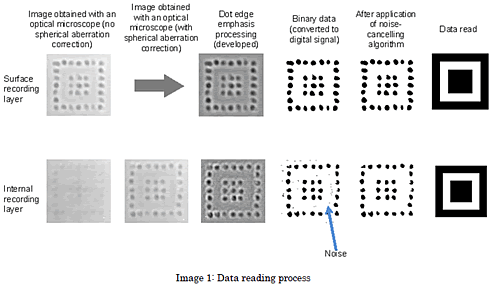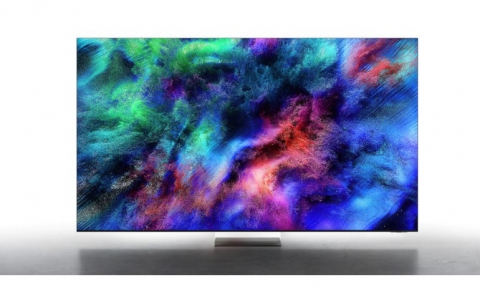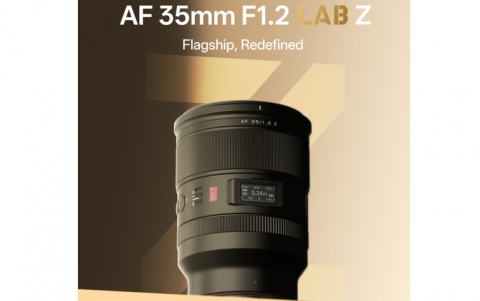
Hitachi Technology Stores Digital Data In 100 Recording Layers, Data Can be Stored For 300 million Years
Hitachi and Professor MIURA Kiyotaka of the School of Engineering, Kyoto University, have successfully achieved read/write of digital data in 100 layers of fused silica glass, a recording density comparable to Blu-ray Disc. One hundred multi-layer data recording was verified by the application of newly developed noise reduction technology to overcome interference from data recorded on other layers while trying to access data written in deeper layers within the fused silica glass.
Fused silica glass is known to offer excellent heat and water resistance. It has already been demonstrated that data can be read without degradation even after subjecting the fused silica to an accelerated temperature test of 1,000 degrees C for 2 hours. This indicates that data archived using fused silica glass can withstand storage of over 300 million years. The use of fused silica is expected to provide new technology for semi-perpetual data storage of valuable data such as historically important legacies and public documents as well personal data that individuals may wish to preserve data for future generations.
In 2009, Hitachi focused on fused silica known for its excellent heat and water resistance as a recording medium for long-term digital data storage. After proposing the use of computed tomography to read data recorded with a femtosecond pulse laser, fused silica glass was confirmed as an effective storage medium. Applying this technology, it is possible to achieve multi-layer recording by changing the laser's focal point to form microscopic regions (dots) with differing refractive indices. In 2012, a method was developed with Kyoto University to read the recorded dots in 4 layers using an optical microscope (recording density equivalent to a CD), and in 2013, 26 layer recording was achieved (recording density equivalent to a DVD). In order to increase recording density for practical applications, one means is to increase the number of recording layers. At the 100-layer level of recording density equivalent to a Blu-ray Disc however issues arose in dot quality degradation and read errors resulting from crosstalk of data recorded in other layers.
To address these issues, Hitachi and Kyoto University identified the factors to realize read/write in 100 recording layers within fused silica glass, and succeeded in demonstrating read/write in 100-layer.
When light is focused on a recording layer deep within fused silica glass, a phenomenon known as spherical aberrations which degrades the quality of the spot occurs. To then form a dot at the degraded spot, laser intensity needs to be increased but in fused silica glass, the focal points of powerful lasers are distorted depth-wise causing dots to be formed in other layers close to the target layer, resulting in noise in reading the data. Employing a spherical aberration correction lens, spot quality degradation was controlled without the need to increase laser intensity, and the formation of dots in the deeper recording layers was verified. Further, by also employing an aberration correction lens to the optical microscope used to read the data, it was confirmed that high-quality images could be attained.

High-quality data recording and reading was achieved by applying a spherical aberration correction lens.
Images captured by the optical microscope are converted to digital signals in reading data: spots where dots are formed are converted to "1", and those without dots are converted to "0." As the layers become deeper within the fused silica glass, it was found that in capturing the images, noise due to crosstalk from other dots in other recording layers increased. To overcome this noise, an image-processing algorithm was applied which detects dot area (size) to distinguish dots from noise. By determining and eliminating image signals below a certain size as noise, it was confirmed that a read signal error rate below 10-3, a standard for practical applications, could be achieved.
In addition, the a reduced read error was achieved by applying a noise-cancelling read algorithm.
In this work, it was verified that with recording layers with a gap of 60µm between layers, 50 layers can be recorded and read on each side of a fused silica disc, giving a total of 100 layers. The results showed indicated a recording density of 1.5 GB/inch2, comparable to that of a Blu-ray Disc is possible using fused silica glass, and the potential for even greater numbers of layers.





















